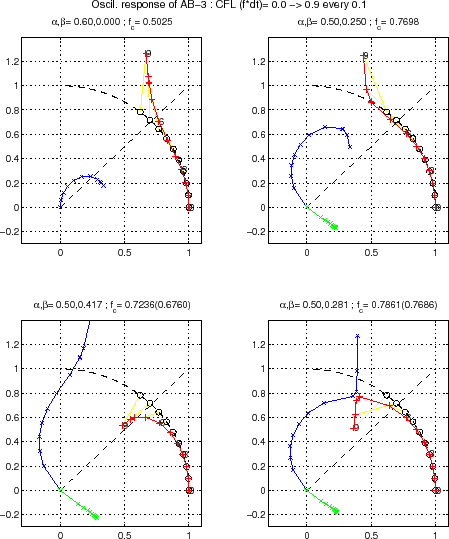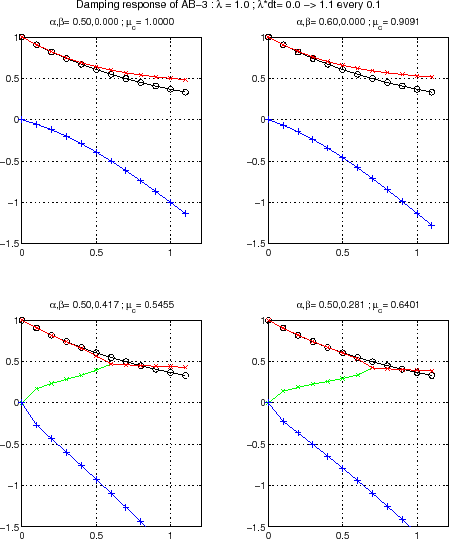 |
 |
|||||||||||
 |
|
|||||||||||
 |
 |
|||||||||||
|
Next: 9.1.2 Time-extrapolation of tracer Up: 9.1 Other Time-stepping Options Previous: 9.1 Other Time-stepping Options Contents 9.1.1 Adams-Bashforth III
The third-order Adams-Bashforth time stepping (AB-3) provides several advantages (see, e.g., Durran [1991]) compared to the default quasi-second order Adams-Bashforth (AB-2):
The The 3rd order AB is obtained with
The AB-3 time stepping improves the stability limit
for an oscillatory problem like advection or Coriolis.
As seen from Fig.9.1,
it remains stable up to a CFL of 0.72,
compared to only 0.50 with AB-2 and
However, the behavior of the AB-3 for a damping problem (like diffusion)
is less favorable, since the stability limit is reduced to
0.54 only (and 0.64 with
A way to enable the use of a longer time step is to keep the dissipation terms outside the AB extrapolation (setting momDissip_In_AB=.FALSE. in main parameter file "data", namelist PARM03), thus returning to a simple forward time-stepping for dissipation, and to use AB-3 only for advection and Coriolis terms.
The AB-3 time stepping is activated by defining the option
#define ALLOW_ADAMSBASHFORTH_3
in "CPP_OPTIONS.h".
The parameters
The AB-3 is not yet available for the vertical momentum equation (Non-Hydrostatic) neither for passive tracers.
Next: 9.1.2 Time-extrapolation of tracer Up: 9.1 Other Time-stepping Options Previous: 9.1 Other Time-stepping Options Contents mitgcm-support@mitgcm.org |
|||








